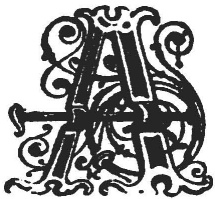
Traditions and Hearthside Stories of West Cornwall, Vol. 2, by William Bottrell, [1873], at sacred-texts.com
Celtic Monuments of Boleigh and Rosemodrass.
Legend and mystic dance;
Lost towns and temples, and that buried shore
Where thy great hero fought his last sad fight,
Cromlechs and quoits and cairns and hills of war,
Circles of mystery and mounds of might.
W. K. D.
 |
There are also traditions of this cavern having served as a place of refuge to some of the Levelis in troublesome times; and of its having frequently been used by our fair-traders, as it afforded them a secure hold for storing their goods, and to have a carouse therein.
Old traditions about the far-reaching and unknown extent of the Fuggo, may not, however, be altogether void of foundation. At the annual excursion of the Royal Institution of Cornwall, in 1871, Mr. H. M. Whitley, of Truro, remarked that the bank, just opposite the branch cavern, sounded hollow, from which he is persuaded that there is a chamber underneath to be yet explored.
There are the remains of a triple entrenchment near, and this subterranean passage might have been connected with it.
Old folks of the neighbourhood say that there was another Fuggo in Trove Hill, on the opposite side of the Glen, but the entrance has long since been closed, and no one knows exactly where it opened.
The track of moor and croft between Trove and Boleigh has indeed never been thoroughly examined by our antiquaries; yet as the vestiges of ancient British habitations are generally found in the vicinity of prehistoric monuments, the Daunce-mayn, Menheres, and holed-stones on the hill, would seem to indicate that this sheltered glen might be a likely place in which to find the remains of old crellas or circular huts, similar to those of Bodennar, Busullow, and Chysauster. And farther up, near the brook, amidst brambles and furze may yet be discovered traces of ancient Celtic dwellings, with ashes still on the hearth and quern and muller beside it.
A short time ago an old inhabitant of Boleigh informed us that many persons in that neighbourhood are afraid to enter the Fuggo, even by day, as they believe that bad spirits still frequent this place. Women of villages near often threaten their crying babies that they will carry them down to the Fuggo, and leave them there for the Bucca-boo if they don't stop their squalling. there are traditions that almost all these caves were haunted by beings of a fearful nature, whose path it was dangerous to cross.
The fuggo at Bodinnar, called the Giant's Holt, was a few years ago much dreaded, as it was thought to be the abode of ugly spriggans that kept watch and guard over treasures which still remain buried in that ancient hiding-place.
There is a somewhat graceful creation of fancy associated with the Vow, or fuggo, at Pendeen, which is said to extend from the mansion to Pendeen Cove, and some say it has branches in other directions, which spread faraway from the principal cavern.
At dawn on Christmas Day the "Spirit of the Vow" has frequently been seen just within the entrance, near the Cove, in the form of a beautiful lady, dressed in white, with a red rose in her mouth. There were persons living, a few years since, who had seen this fair but not the less fearful vision; for disaster was sure to visit those who intruded en the spirit's morning airings.
Many of the "sawns" in the western cleaves have also similar legends connected with them, only the dwellers in sea-side caverns, are either of the mermaid race, or what we call Hoopers. The latter are beneficent spirits who warn fishermen from going to sea when there is an approaching tempest.
The Hoopers shroud themselves in a thick fog which stretches across coves frequented by them. There are well remembered
stories of Sennen Cove Hooper that used to rest in a cloud of mist, on Cowloe, and thence emit its doleful notes as a danger signal.
